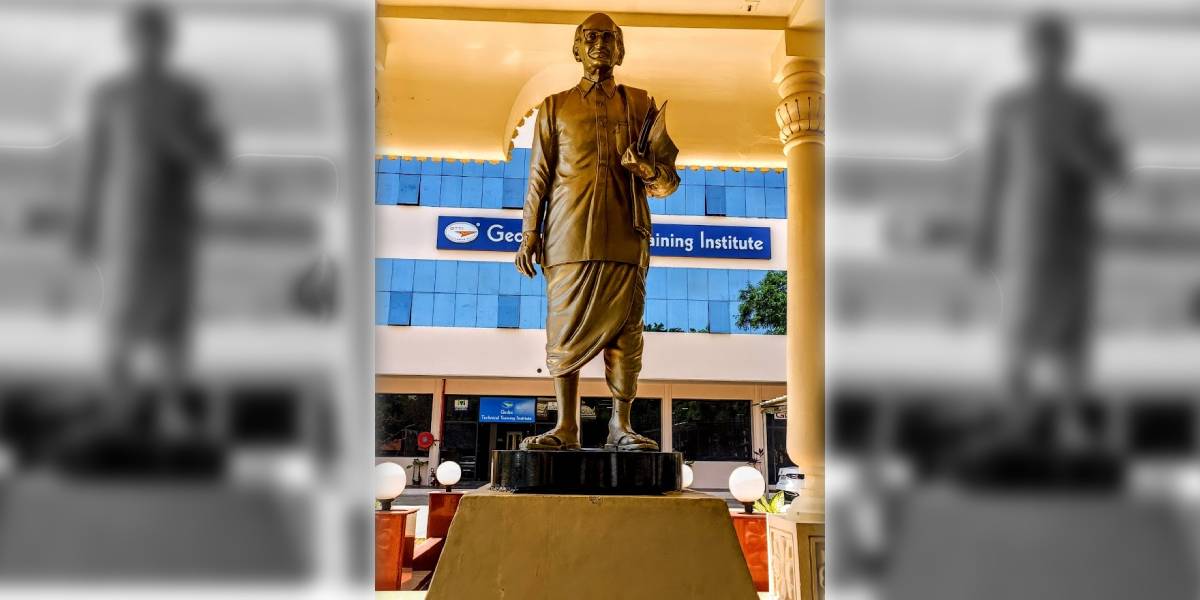The Tamil Nadu inventor and engineer was truly a man ahead of his time. He manufactured India’s first belt-driven pump, an electric motor, a four-stroke internal combustion engine, and also a razor that looks modern even now.

A statue of GD at the Coimbatore science museum (Vijayalakshmi Balakrishnan)
The unusual paths an inquiring mind takes … Recalling the many contributions of Gopalaswamy Doraiswamy Naidu (or more popularly GD Naidu), The Experimenta — an interactive science museum — opened up in Coimbatore, a few weeks before 23 March 2023, the 130 birth anniversary of the inventor.
An initiative of GD Naidu Charities, the timing of the science museum’s opening in Coimbatore was more than happenstance. Being ahead of his time was the norm for the man known as the Edison of India.
“If my car broke down, I would look for someone to fix it,” Arthur Hope, then governor of Madras, was ruminating in 1945, while inaugurating the polytechnic that would bear his name. “Mr Naidu would not do that. For one thing, his car would not break down. And secondly if it did, he would know what to do with it,” Hope quipped.
Hope can be heard mentioning it in the following Films Division documentary on Naidu.
Governor Hope had assessed GD Naidu well. What he left unsaid was that Naidu would also then figure out how to ensure that the car would not break down in that way again.
What made GD Naidu special was his instinctive inventiveness, and the ability to link solutions to the problems of common people.
So when he bought a bus on loan, it serviced not only the growing urban centres of the colonial Madras state; the routes were so designed to link the villages to the urban areas.
Being a farm boy himself, he well knew what it meant to have to travel long distances, on the ubiquitous bullock cart, which was then the primary means of transport.
Remembering his roots, and trying to solve common people’s problems, was also good for business.
His fleet began to grow, one bus in 1920 to two to finally 600, when he made the decision to sell the fleet.
Naidu drove that first bus himself for years, which gave him a unique perspective on what toll the ride took on drivers, the passengers, and the bus itself.
A bus terminus came up, with modern facilities, including a café and restrooms for passengers. It was connected to a workshop where both regular maintenance and higher-order repairs would become possible.
With mechanics hard to come by in India, Naidu travelled to the US, enrolled as the oldest student with the Ford Motor Company and other polytechnics, learnt all they had to teach, and returned to train many generations of skilled automobile professionals.
Recalling his own, lacklustre school performance, he ensured that his training programmes were open to those who had not cleared the Class X examination.
His workshop was able to do much more than primary repairs.
Here the Edison of India manufactured India’s first belt-driven pump (1928), an electric motor, and also a four-stroke internal combustion engine.
The pump was an important innovation, demonstrating Indian ingenuity, and simultaneously affecting Britain’s exports to India, its largest market.
What he is most well known for is his ‘Rasant’ razor, the prototype of which was built with imported Norwegian steel and could not be replicated with the locally available steel, explains, Harish Damodaran, in his outstanding book, India’s New Capitalists: Caste, Business and Industry in a Modern Nation.
The Rasant, which won awards at the Leipzig Fair, looks eerily like the shaving razors advertised by all majors on all TV channels even today.
In his later years, GD Naidu turned his attention to his roots — agriculture — and set up a research farm.
One of his innovations was a papaya that tasted as sweet as a mango, which a skeptical CV Raman, the Nobel Prize winner, would come down to taste, and affirm.
GD Naidu epitomised an India emerging from dark times, wanting equality, and willing to do the hard work that that desire demands. On the 130th birth anniversary of the Edison of India, here’s to a life well-lived.
(The author lives in a village in south India, and looks at the rest of India and the world from that perspective. She has been a journalist, a development worker, and a writer and podcaster over the years. She is author of ‘Growing Up And Away, Narratives of Indian Childhoods’. Email: baroquepodcast@gmail.com. These are the personal views of the author)